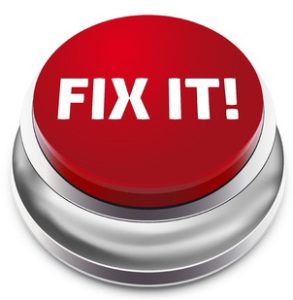By Dr. Ken Broda Bahm:

Her key witness is still on the stand. Direct examination went well, and now the other side’s cross-examination is just wrapping up. Standing up for redirect, the attorney looks at her notes: Coming out of cross, there’s a pretty long list of concessions, misleading answers, or unclear implications, and all of them need to be fixed. So, starting at the top of the list, the attorney begins: “Remember when opposing counsel asked you… well what did you mean when you said… can you clarify the background for that…?” Once the impression is a bit improved, it is on to the next item on the list.
The net effect can be tedious, and not just to the attorney making her way through the items to fix. To the jury, now listening to the third act for this witness, the final notes can sound defensive. At its worst, it can look like a clean-up operation that rivals the Exxon Valdez. The last impression they’re left with could well be that, even though each point can be answered, this is a witness with a lot of problems, a witness who needed tons of help from her lawyer. This, of course, is not the impression that you’re after. Redirect can be a powerful opportunity: a chance to get the last word and return to the positive message this witness is bringing to your case. But the redirect that reduces its functions to just a fix-it list can drain the impact from this phase of examination. In this post, I’ll take a look at some of the problems as well as some of the solutions to a repair-oriented redirect examination.
The Problem With Redirect
Of course, the proper function of redirect is to respond to and clarify anything that came up in cross-examination. And that chance to clean up isn’t a bad thing to have. If things need fixing — and after an effective cross, at least some things will need fixing — then it is good to have an opportunity to fix them. And the rules are pretty consistent that you cannot gratuitously repeat questions covered in direct, and you cannot go beyond what the other side focused on in cross-examination. So what can you do? You can fix the problems that came up.
The tension is that this purpose is defensive, and the more redirect is used exclusively for that purpose, the more it sends a message of weakness. The danger is that you can end up nominally fixing all the problems while still sending the ultimate message that you have a weak and problematic witness.
The Solution: Repairing the Redirect
Working within the rules and consistent with the purpose of redirect examination, I think there are three ways to avoid or mitigate the problem of a defensive redirect.
Minimize the Necessity of Redirect
A good witness needs to be active during cross-examination. The more they are passive and the more they allow themselves to be led and to give just simple “Yes or No” answers to the other side’s questions, the more work they are creating for their own attorney in redirect examination. And a good answer at that point will still be less effective than a good answer would have been in cross when the question was first asked. For that reason, it is critical for witnesses to get the message that their job isn’t to “just answer the question” without worrying about what the other side will do with it, and their job isn’t to just trust that their lawyer will fix everything during redirect. Rather, their job, if they are able to do it, is to be active and assertive, to fight back at their first opportunity during the cross-examination. Of course, a good witness should work on fighting back without looking combative or defensive, but the essential ingredient is to respond on one’s own terms instead of being led along. The closer the witness gets to that, the closer the attorney gets to that ideal redirect: “No questions, your honor.”
Focus on Rebuttal and Not Just Refutation
The words “refutation” and “rebuttal” are often used interchangeably, but those who have studied argumentation and debate know that there is a critical distinction: Refutation merely defends, while rebuttal advances your argument. If refutation is saying, “You’re wrong,” then rebuttal is saying, “You’re wrong, and my argument is as strong or even stronger following your attempt to take it down.” That is what a good rebuttal in closing ought to do, and some of the same features apply to a redirect examination. Don’t just settle for a repaired position, show how the other side’s failure to land a real blow leaves your witness with an even stronger position.
Return to Your Themes
Based on the rules, you can’t just repeat the questions from direct examination, but the witness can return to some of the same language. As I have emphasized in these posts before, the theme is not just something to be worked into the language of opening statement. Instead, the theme should be integrated throughout the case presentation, including the witness testimony. If the theme of a medical negligence defense is that the doctor was forced to rely on “the best option among bad options,” then the physician-witness should know to keep returning to various versions of that language. Ultimately, the goal should be to use the memorable points from cross- examination as a springboard to remind jurors of the “greatest hits” from direct examination.
Other Posts on Witness Examination:
- Witnesses: Know Your Seven Ways Out of the ‘Yes or No’ Trap
- Counterpunch: Ten Ways to Fight Back on Cross
- Prepare Your Witness: Top 10 Posts